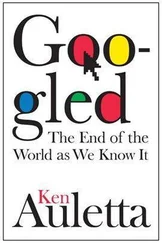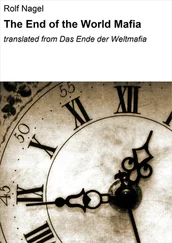According to some Christian Zionists, as we have seen, the beginning of the end would commence in the fortieth year after the establishment of the modern state of Israel. A former NASA rocket engineer named Edgar Whisenant argued the case in 88 Reasons Why the Rapture Will Be in 1988, where he predicts that the Tribulation would begin on October 3, 1988—Rosh Hashanah, the first day of the new year on the Jewish ritual calendar—and the Battle of Armageddon would break out exactly seven years later. One enterprising preacher offered a package tour to Israel that was timed to coincide with the day when faithful Christians would be “raptured” to heaven. The price of the package was $1,850, including “return if necessary.” 79
“We stay at the Intercontinental Hotel on the Mount of Olives,” the brochure announced. “And if this is the year of our Lord’s return, as we anticipate, you may even ascend to Glory from within a few feet of His ascension.” 80
As it turned out, of course, the tour members were compelled to make use of their return tickets, but the failure of the Rapture to arrive on time did nothing to cool the ardor of Christian Zionists. The so-called Jerusalem Temple Foundation, headquartered in Los Angeles and addressing its fund-raising appeals to Christian fundamentalists across America, raised a reported $10 million to fund the construction of the Third Temple in Jerusalem. Christian fundamentalists on tour in Israel delight in the spectacle of Jewish fundamentalists who gather to slaughter goats in preparation for the resumption of animal sacrifice in the rebuilt Temple, and they take home souvenirs in the form of the half-shekel coins, freshly minted in pure silver, that one Jewish entrepreneur is coining to fill the treasury of the Third Temple when it is finally built.
Yet another attraction for doomsday-minded Christians, at least for a short while, was the dairy farm in northern Israel where a cow called Melody was born in 1996. The Holstein calf was bright red at birth, a fact that sparked a fresh wave of messianic anticipation: the offering of an unblemished red heifer is mentioned in the book of Numbers, 81and the availability of a cow that was suitable for the long-abandoned ritual of animal sacrifice suggested to both Jewish and Christian fundamentalists that the end was near. Until Melody’s red coat began to show patches of white hair, thus rendering her ritually impure and unfit for sacrifice, Melody attracted busloads of Christian tourists, and apocalyptic preachers wondered out loud whether she was destined to be the first animal to be offered to God on the altar of the Third Temple.
“Could Melody’s ashes be used for Temple purification ceremonies,” mused televangelist Jack Van Impe, “as early as 2000?” 82
Such yearnful apocalyptic fancies have been likened by journalist and author Gershom Gorenberg to the cargo cults of the South Pacific islanders, who watched in envy as ships and planes arrived, seemingly out of nowhere, to bring abundant quantities of both essentials and luxuries to newly arrived European and American missionaries and soldiers. Starting in the late nineteenth century and continuing through World War II, the islanders imitated the well-provisioned newcomers by fashioning their own crude versions of docks and control towers out of reeds and fronds in the hope that ships and planes would magically appear and deliver cargo to them, too. Here is yet another variant of the millennial kingdom of peace and plenty as envisioned by men and women who knew the book of Revelation, if at all, only from Christian missionaries.
“For some fundamentalists, Jewish and Christian—often educated people—the Temple has become the great Cargo ship,” explains Gorenberg in The End of Days. “[M]inting silver half-shekels is akin to building the dock.” 83
Magical thinking, of course, has always figured in the religious imagination in general and the apocalyptic idea in particular. The author of Revelation, as we have seen, delights in the revenge fantasy of “Babylon” and its cargo going up in flames: “And the merchants of the earth weep and mourn for her, since no one buys their cargo any more, cargo of gold, silver and pearls….” 84But magical thinking can be literally life threatening when it is applied to an enterprise as delicate and as dangerous as peacemaking in the Middle East.
Christian Zionists, in fact, tend to regard the prospect of peace between Israel and its Arab neighbors as an obstacle to the second coming of Jesus Christ and, therefore, the work of the Devil. Peaceful coexistence between Arabs and Jews, as they see it, would only hold back the hands on “Israel’s prophecy clock” by postponing the fateful day when Israel is restored to its most expansive biblical boundaries and the Jewish people return en masse to their homeland.
“In spite of the rosy and utterly unrealistic expectations by our government, this treaty will not be a lasting treaty,” said Jerry Falwell in condemning the Camp David accords between Israel and Egypt in 1979. “You and I know that there’s not going to be any real peace in the Middle East until the Lord Jesus sits down upon the throne of David in Jerusalem.” 85
Such sentiments have endeared the Christian Zionists to the hawks and hard-liners in Israel. “Your devotion to our country,” Prime Minister Yitzhak Shamir declared to a gathering of evangelical ministers in 1988, “will become a strong arm in our arsenal of defense.” 86On an official visit to Washington, D.C., in the 1990s, Benjamin Netanyahu, then prime minister of Israel, pointedly closeted himself with Jerry Falwell before calling on President Bill Clinton. “It is my belief,” Falwell once announced on 60 Minutes, “that the Bible Belt in America is Israel’s only safety belt right now.” 87
Some gestures of support for Israel by Christian Zionists, of course, are purely whimsical when they are not downright weird. When Israel asserted sovereignty over all of Jerusalem after the liberation of the Old City in 1967, for example, most nations of the world declined to move their embassies from Tel Aviv to Jerusalem. The diplomatic rebuke inspired a Dutch minister named Jan Willem van der Hoeven to establish the so-called International Christian Embassy in Jerusalem. The “embassy” is nothing more than a public-relations gimmick, but several prime ministers of Israel, ranging from the rightist Benjamin Netanyahu to the leftist Yitzhak Rabin, found it appropriate to address its annual gatherings.
“My messiah is not going to come to a Mosque of Omar,” declared van der Hoeven at one such gathering, “but a Third Temple which God will let be built.” 88
Other efforts in support of Israel, however, are more substantial. The International Fellowship of Christians and Jews, headed by an Orthodox rabbi named Yechiel Eckstein, has raised in excess of a quarter-billion dollars from some four hundred thousand Christian donors in support of its various programs, including the promotion of Jewish emigration to Israel. “No Jew since Jesus has commanded this kind of gentile following,” cracked commentator Zev Chafets in the New York Times. 89And the Christian Friends of Israeli Communities encourages churches across America to “adopt” Jewish settlements on the West Bank: “Those pioneers are now fulfilling the covenant to Abraham, Isaac and Jacob,” it is explained in one pamphlet, “regarding the restoration of all the land God has allocated to Israel.” 90
Benjamin Netanyahu once affirmed Israel’s solidarity with Christian fundamentalism—and answered those who regard Christian and Jewish Zionists as strange bedfellows—in elevated and even rhapsodic terms while addressing an annual event called the National Prayer Breakfast for Israel. “A sense of history, a sense of poetry, and a sense of morality imbued the Christian Zionists who more than a century ago began to write, and plan, and organize for Israel’s restoration,” said Netanyahu, then serving as Israel’s ambassador to the United Nations. “So those who are puzzled by what they consider the new-found friendship between Israel and its Christian supporters reveal an ignorance of both. But we know better.” 91
Читать дальше










